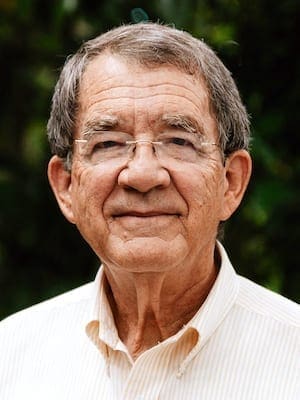Luke’s rather long portrayal of the first part of Good Friday starts early in the morning at a gathering of the Sanhedrin.
This “supreme court” of Judaism is where the religious leaders solidified their position that Jesus was a dangerous man who needed to be done away with (Luke 22:66-71).
They take him to Pontius Pilate, who, as a Roman official, had the authority to order and carry out an execution, and presented to him all the evil that Jesus represented.
We know the story – Pilate hears the charges, moves to dismiss them, then passes Jesus off to Herod, who had legal jurisdiction in Galilee because Jesus was a Galilean.
After questioning, Herod sends Jesus back to Pilate, who continues to argue that he finds no fault with Jesus (probably recognizing the religious leaders’ claims for what they are).
The religious leaders incite the crowds in support of their campaign to get rid of Jesus, and they join in the chorus: “Crucify him! Crucify him!”
Pilate finally yields to the pressure of the crowd and grants the verdict to crucify, and they lead him away to the place called The Skull, where the execution is carried out.
There is little new in this story that we rehear each year at this time, and the season of Lent, Passion Week and Easter is an annual reminder of this founding paradigm of the spiritual journey that is our heritage.
Because of its prominence in the gospel portraits of Jesus, this story of Jesus’ last hours was clearly a significant part of the experience of his followers and of the generations that followed.
It was a kind of “historical drama” – not a video-like record of what happened, but a drama based on what happened, designed to make the experience “real” to those who would hear it repeated year after year.
As a drama, its purpose is not to be just something we can watch or listen to, but something that we can be “drawn into” – seeing it as a portrayal of the larger picture of life.
When we see in the story how religious authorities react to a new and different understanding of the faith they manage, or how they “scapegoat” one they disagree with and offer all manner of false claims and charges, or how religious authority and political power can “team up” to accomplish goals neither could accomplish alone; and when we see how such efforts can stir up a riotous crowd in support of their crusade – we are looking at a portrayal of human experience that is not limited to first-century Jerusalem.
The “passion drama” of Luke’s gospel, like that of Mark, Matthew and John, has been the inspiration of the long history of “passion plays” that have re-enacted this powerful series of events.
And, like those passion plays, from the famous ones like Oberammergau in Germany to the simple ones done by local groups of Christians, the drama invites us not only to watch but also to participate.
And participate we do, every time we choose our role in this drama that goes on around us all the time.
Will we be a member of the Sanhedrin, presuming to judge those who offer a way of thinking that is contrary to what our tradition has sanctified?
Will we be a Pilate, who is so afraid of losing his privileged position that he cannot resist being used as a puppet for others’ causes?
Will we be a member of the crowd, uninformed enough to be exploited and drawn into the schemes of those who exploit our desires and fears for their own ends?
Will we be one who walks the road to the cross, watching perhaps from afar as the one whose call we had said “yes” to is finally rejected by the fragmented human family he had given his life to reconcile?
There is a part in this cast for each one of us, and we get to choose which part we will play. And each day is a casting call.
 Colin Harris is professor emeritus of religious studies at Mercer University and a member of Smoke Rise Baptist Church in Stone Mountain, Georgia.
Colin Harris is professor emeritus of religious studies at Mercer University and a member of Smoke Rise Baptist Church in Stone Mountain, Georgia.
Professor emeritus of religious studies at Mercer University, a member of Smoke Rise Baptist Church in Stone Mountain, Georgia, and the author of Keys for Everyday Theologians (Nurturing Faith Books, 2022).

